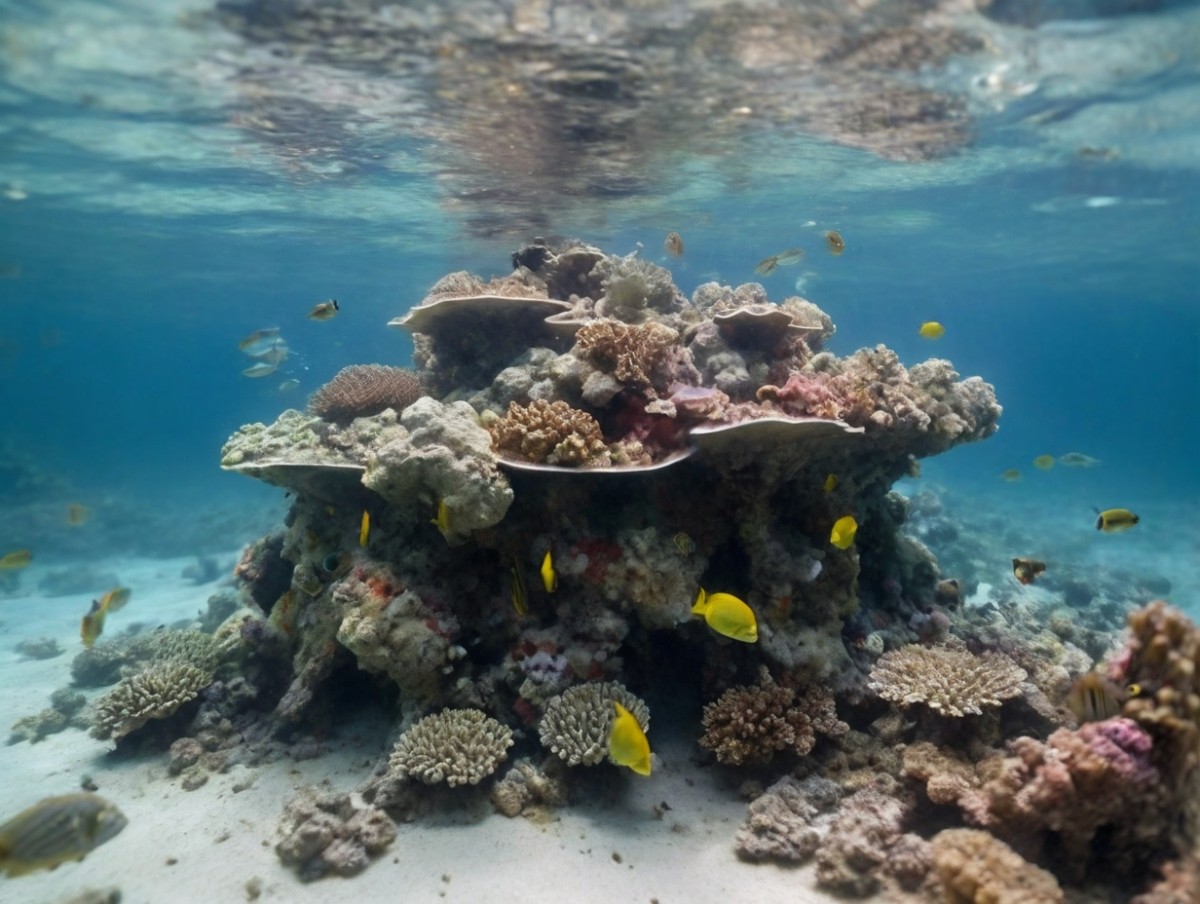In a groundbreaking collaboration, industrial designer Tom Dixon and technologist Suhair Khan are spearheading an initiative to regenerate coral reefs and combat coastal erosion. Their innovative approach combines elements of a 1970s plan to construct underwater cities with cutting-edge AI technology, offering a promising solution to the pressing threats facing marine ecosystems.
A sustainable solution for endangered coral reefs
Coral reefs, vital ecosystems teeming with biodiversity, face a myriad of threats including climate change, shipping activities, and coastal development. With coral reefs covering just 1 percent of the ocean floor yet supporting over 25 percent of marine life, their preservation is of paramount importance. Recognizing the urgency of the situation, Dixon and Khan are pioneering a regenerative approach that seeks to mitigate the damage inflicted on coral reefs while addressing coastal erosion.
Harnessing mineral accretion technology: A blueprint for regeneration
At the heart of their initiative lies Mineral Accretion Technology, conceived by architect Wolf Hilbertz in 1976. This innovative process involves the utilization of a charged metal framework submerged in seawater, which facilitates the accumulation of calcium carbonate, akin to the buildup of limescale in hard-water areas. The resulting limestone deposit, known as Biorock, serves as a foundation for coral regeneration and fosters the growth of various marine species, including oysters and sea grass.
Dixon’s inspiration for this project stemmed from Hilbertz’s visionary concept of constructing underwater cities that could be floated to the surface. Drawing upon this inspiration, Dixon has experimented with Mineral Accretion Technology by creating limestone furniture on the seabed off the coast of the Bahamas. The results have been promising, demonstrating the potential for Biorock to revitalize degraded coral reefs and enhance marine biodiversity.
AI-Powered predictions: Optimizing impact through technology
In their collaborative efforts, Dixon and Khan leverage the power of artificial intelligence to predict the outcomes of deploying Biorock in various environmental conditions. By utilizing AI algorithms, they can assess the efficacy of introducing Biorock to different sites, taking into account factors such as water temperature, weather conditions, and solar power availability. This data-driven approach enables them to optimize the impact of their intervention, maximizing the potential for coral reef regeneration and coastal protection.
With ambitions to implement their innovative solution on a larger scale, Dixon and Khan plan to conduct trials off the coast of Northern Australia. In doing so, they aim to demonstrate the feasibility and effectiveness of their approach in real-world conditions. Crucially, they also seek to engage local communities affected by coral reef degradation, recognizing the importance of community involvement in conservation efforts. By collaborating with stakeholders and garnering support at the grassroots level, they hope to champion their cause and catalyze widespread adoption of regenerative practices.
A brighter future for coral reefs
As threats to coral reefs continue to escalate, initiatives like the collaboration between Tom Dixon and Suhair Khan offer a ray of hope for the preservation of these invaluable ecosystems. By harnessing the ingenuity of the past and the power of modern technology, they are paving the way for a more sustainable future, where coral reefs thrive and coastal communities are protected. With determination and innovation, they are proving that it is possible to turn the tide in favor of ocean conservation, one reef at a time.





